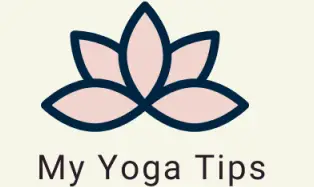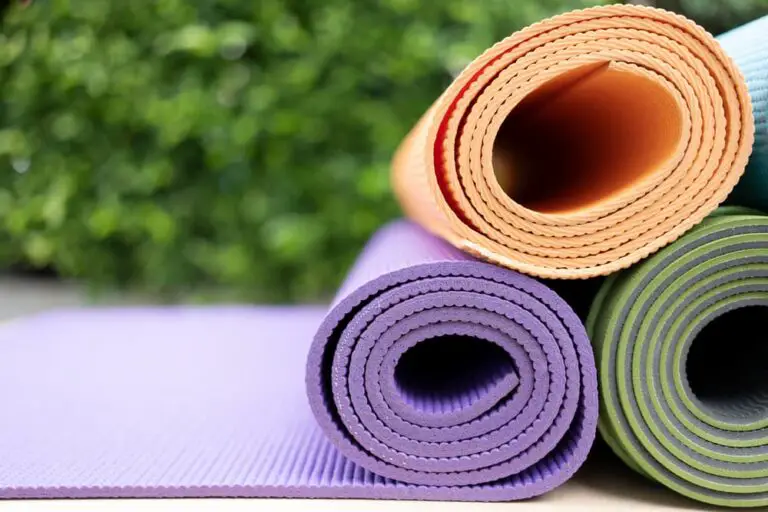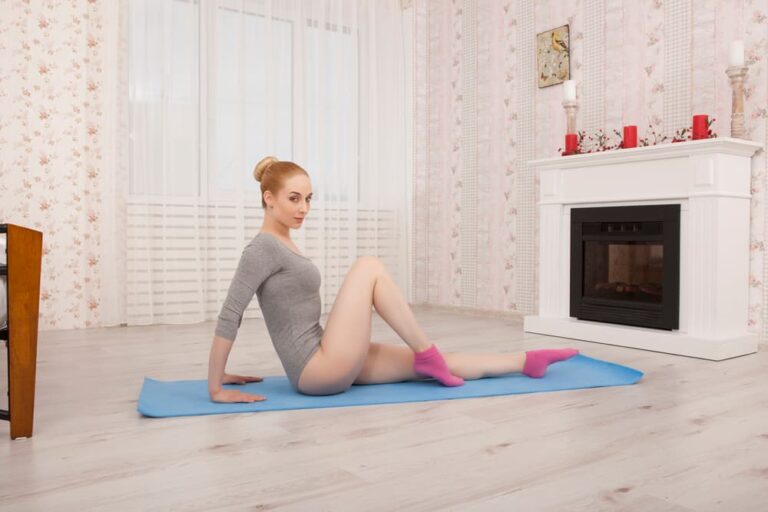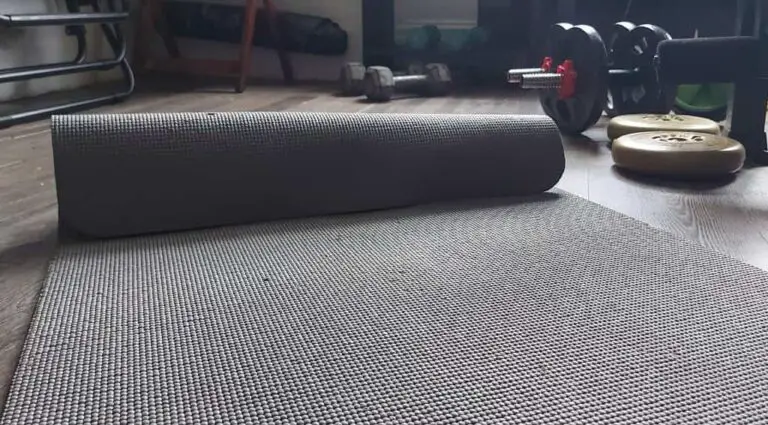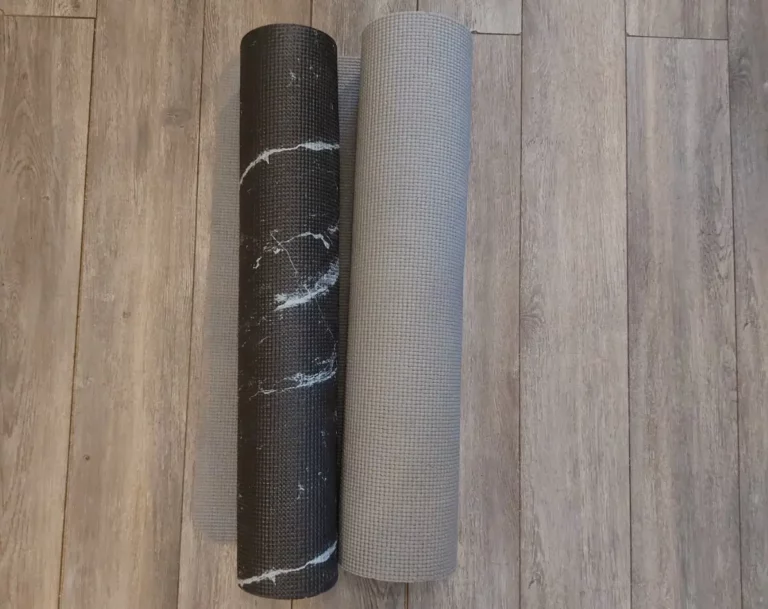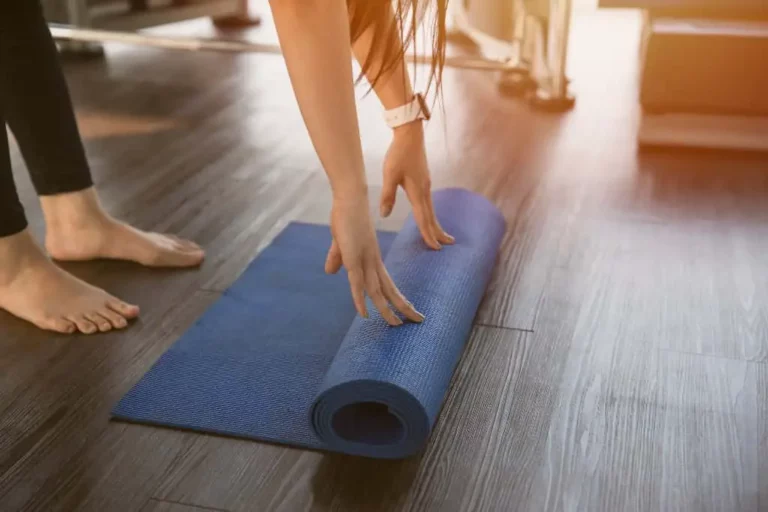Do I Need A Yoga Mat If I Have A Carpet
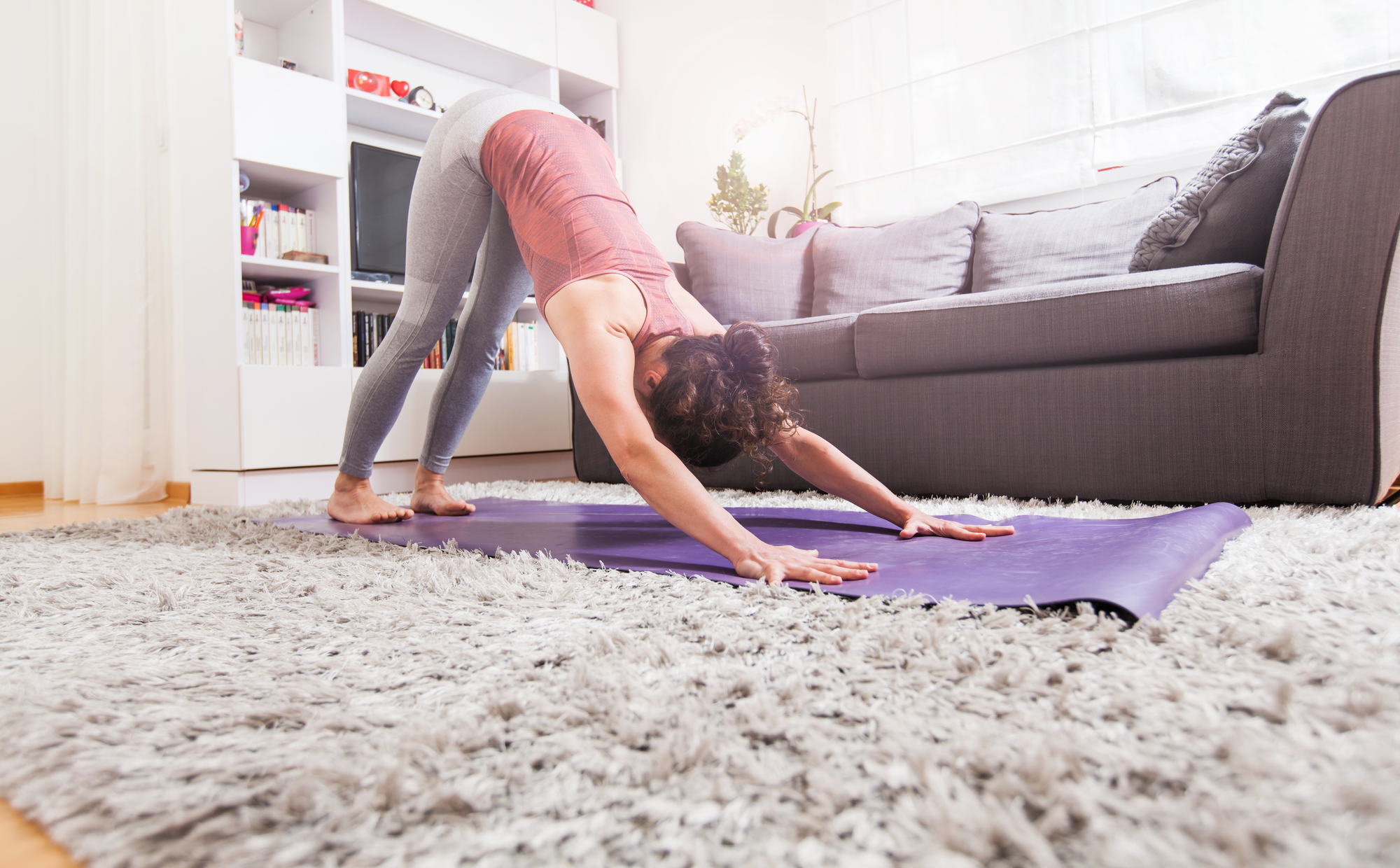
Planning a yoga session into your schedule is much easier if you practice it at home. However, yoga is normally practiced in studios with hard floors with yoga mats. So, do you need a yoga mat if you have carpets in your home?
Practicing yoga on carpets can pose unique challenges to certain poses. It is not impossible to do yoga on a carpet. However, the risk of injury is higher due to the stability and lack of resistance. Still, for safety purposes, gentle sitting and standing pose work best when doing yoga on a carpet.
Your environment should not stop you from getting your daily dose of yoga to invigorate your mind, body, and soul. We consider the pros and cons of doing yoga on carpets, how to remedy that, and if you can also use a yoga mat on your carpet. We also look at some tips to practice safe yoga on a carpet.
Can You Practice Yoga On A Carpet?
No set rule says yoga has to be practiced on a yoga mat. Yoga can be practiced as much on a carpet in your home as you would in a yoga studio using your favorite mat. However, it can be more difficult to practice certain poses depending on the carpet you have.
If you are trying yoga out for the first time and don’t want to invest in the mat before deciding if this is indeed something for you, or perhaps you are wondering if it’s at all necessary to have a mat if you can practice yoga on a carpet. Whatever the reasons, there are some points to consider about practicing yoga straight on your carpet.
Resistance
Yoga mats are specifically designed to provide your hands and feet with grip and resistance against slipping in certain poses. On the other hand, carpets are generally soft, smooth, and uneven, depending on the carpet in your home.
Sliding is a yogi’s biggest concern, especially in challenging poses or fast-flowing yoga like Ashtanga. Even in a Vinyasa, although the pace is slower, your concentration to control your body between breathing, stretching, and movement can be affected due to the lack of proper resistance from the carpet.
Stability
Carpets come in many different materials. The surface is smooth, soft, and sometimes uneven, making it harder to find the support and balance you need for your hands and feet, not to mention the strain you can put on your joints.
Yoga requires focus, the ability to concentrate, yet still be able to relax. If a carpet doesn’t provide stability, trying to find a balance between stretching and contracting different muscle groups can become more demanding and stressful than the desired effect yoga practices should have.
Experience Level
Your experience level is also essential when practicing yoga on a carpet. As a beginner, you are still learning how to successfully execute the poses using the correct muscles to contract while stretching others.
Practicing yoga on a carpet can be more challenging for beginners as they still need to achieve core balance and strength to perform the movement. You may use more force or incorrectly perform the movements to prevent your feet from slipping without even knowing it, which could lead to injuries.
The Advantages And Disadvantages Of Carpet Yoga
Practicing yoga on the carpet is not all doom and gloom, and there are some advantages along with disadvantages that can be overcome.
Carpet Yoga Advantages
- Carpets provide some cushioning reducing the pressure on joints. Comfier for sitting yoga, offering more padding.
- During colder months, the added benefit of carpets helps provide more warmth than hardwood floors.
- Your movements are not limited to the size of the mat. You have more space and freedom to stretch beyond the limits of the mat sizes.
- Inadvertently, the reduced traction from the carpet’s material may require you to work your muscles harder to keep the poses balanced, increasing your core stability and building your strength.
- It’s a better option than not having any protection between you and the hard floor.
- It’s scientifically proven that the feel of carpets under your feet induces less stress than hard floors. So, the added comfort and feeling of carpet can help with relaxation during your yoga routine.
Carpet Yoga Disadvantages
- Hands and feet can lack the support needed for certain poses, increasing the pressure on joints which can lead to injuries.
- Flowing and fast passed yoga poses can lead to carpet burns, scratches, and skin irritations.
- Carpets are not the most hygienic surfaces to work on. Your face is often close to the ground, and the dust and particles trapped in the fibers can affect the air quality when you breathe.
- Sweat and body oils will get absorbed into the carpet, which means more cleaning. Depending on where in the house you practice your yoga, the carpet can start to look worn, tattered, and faded due to all the wear and tear, which you may want to avoid.
- The lack of grip can affect your concentration on executing the movements correctly, and instead, focusing on not slipping and falling on your face.
Tips To Safely Practice Yoga On A Carpet
Although you can practice yoga on carpets with some benefits, not all yoga practices can be done safely on carpets. Fast-flowing yoga, like Ashtanga yoga or even Vinyasa, which focuses on the coordination of breathing with movements, can be challenging to accomplish correctly in the best conditions.
Here are some tips when practicing yoga on carpets.
Tip 1: Avoid fast flow movement. Sweat and cardio workouts are best left to more stable surfaces, which will do more for your balance and prevent you from getting injured or feeling frustrated as you struggle to grasp the pose.
Tip 2: Practice gentle sitting or standing poses. The softer padding of a carpet is perfect for making sitting yoga more pleasant. It allows you to focus on your intents and relaxation. Carpets are also great for cushioning joints for standing poses that require gentle stretches.
Tip 3: Practice poses; don’t push the limits. Yoga is all about pushing the limits and stretching that extra bit further, all in the name of increasing stamina, strength, and flexibility. However, keep it simple on the carpet; practice your pose but don’t push the limits. You will not have the same traction as from a mat to help you avoid injury.
Tip 4: Incorporate using a wall. Use a wall, if available, to help you balance or adjust certain poses to make it easier and more comfortable to achieve the desired effect.
Learn more!! See our article Tips To Choose The Best Yoga Mat for more information.
Do Yoga Mats Work On Carpets
Yes, yoga mats can work on carpets. However, it depends on what type of carpet you have and if the mat is compatible with the carpet.
If you struggle to effectively practice your yoga routine or need a more stable surface to perform high-intensity yoga safely, you always have the option of adding a compatible yoga mat. Make sure the mat is thin enough, generally four to six millimeters thick, depending on your carpet.
If the grip is your issue, adding a rubberized mat can help you better grip and increase your balance as well, not to mention it’s more hygienic and easier to clean after a sweaty workout.
Another option is to use a portable yoga floorboard that you can purchase or make yourself.
Conclusion
Yoga is not restricted to yoga mats, although they do offer certain advantages to achieve optimal yoga poses that you may not achieve when practicing on a carpet. Although carpets are better suited to slower yoga poses like sitting or standing stretches, you can overcome this problem for more intense yoga by adding portable yoga floors.
